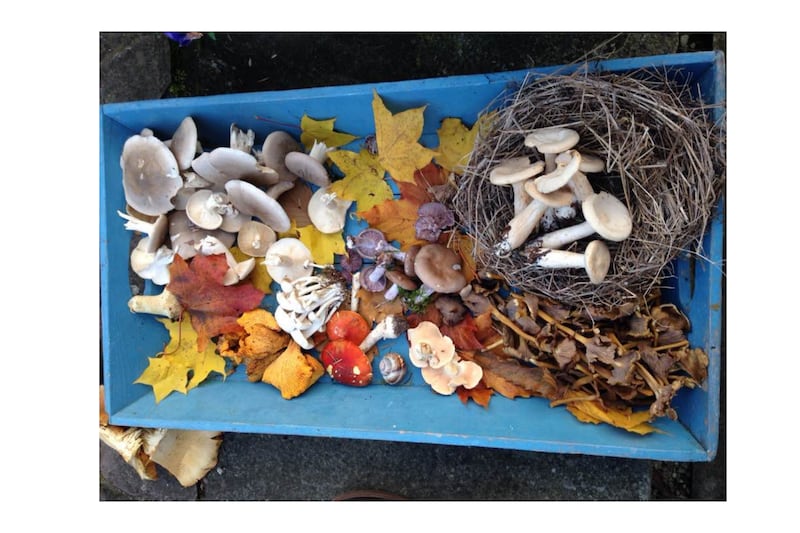Will there be a positive public health legacy from the enforced outdoors socialising of the last two winters? Are we hardier folk maybe, conscious of the blessings of our temperate climate where it is rarely too cold to be outside?
September is a brilliant time to make like a squirrel and go for a forage. Mary Bulfin’s walks are for everyone “from the three-year-old to your granny”, she says. She calls herself Wild Food Mary, but the walks are less about finding and picking wild food as seeing how connected we are to the world around us. Crowds don’t return with baskets bulging with spoils. Wild ecosystems are too fragile to sustain groups of people hunting for their lunch like they might in the ready meal aisle in Dunnes.
“The walks are more about a sustainable approach to landscape,” Bulfin says. She wants people to see hedgerows with a new lens, think about pollinators and be amazed by how many edible plants surround us in a wilder landscape. There is a farm and folk medicine heritage to these plants, as she explains.
“Two of our most reviled weeds are just amazing medicinally. Dandelions can kick-start your liver, help you digest fat and deal with allergies and inflammations. Nettles are full of protein and also amazing for rheumatism and arthritis.” On Culture Night she was showing schoolchildren how to make material fibre from nettles.
READ MORE

Based near Birr in Co Offaly, Bulfin offers weekly walks in and around Laois and Offaly and also works with transition-year students and one-off groups. She’ll explain how dandelions are vital in early spring to feed the queen bees who have overwintered and are full of the next generation of pollinators. “Every day is different. I go out foraging with people and I learn something as well. Like recently I learned that parts of our very poisonous yew tree are being used for cancer treatment.”
Since the pandemic, her audience has grown to include many more family groups. “I took my grandson on his first forage when he was just one. He’s three now and loves it,” she says.
She also gets a lot of people who have just bought their first home or have a garden for the first time and want to get a better understanding on gardening “a little bit more wild”. Her dream would be to have every new national school student plant a crab apple and a hazel tree, so that by the time they leave school, that tree is producing food for humans and animals. Now that would be a positive public health legacy.
Catherine Cleary is co-founder of Pocket Forests













